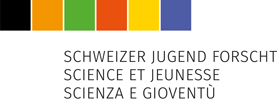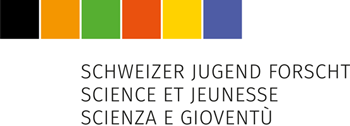Chemie | Biochemie | Medizin
Deniz Kadioglu, 2002 | Olten, SO
Sickle cell disease (SCD) describes a group of lifelong inherited conditions that affect blood flow in a negative way. It is caused by a mutation in the beta-globin gene that is important in the formation of hemoglobin, resulting in the production of an abnormal form and causing red blood cells to become sickle-shaped under certain conditions, interfering with blood flow. This leads to multiple comorbidities, stroke being among the most life-threatening ones. In the UK, newborn screening for SCD has been established in 2006, since an early detection of the condition is crucial. By analyzing data from the CPRD, it was found that stroke is less frequent in the general SCD population than expected with an overall prevalence of 2.9%. Also, the data hinted that the stroke risk in children up to 14 years has decreased since the introduction of newborn screening in 2006.
Introduction
Main aims were (I) Calculating the prevalence of stroke among SCD patients in the UK, stratified according to subtype of SCD, sex, age, and subtype of stroke. (II) Calculating the incidence rate (IR) of stroke in the subsample of SCD patients who had been registered in the CPRD since birth. (III) Calculating the cumulative incidence of stroke during the first 14 years of life in the patient subsample born before or after the introduction of SCD newborn screening in the UK (i.e., born between 1992 and 2005 or born between 2006 and 2019). The goal of (I) and (II) was to give an overview of the prevalence and incidence of stroke in UK SCD patients. The hypothesis underlying (III) was that the cumulative incidence of stroke in children with SCD during the first 14 years of life has decreased since the introduction of the newborn screening program.
Methods
The study was conducted using data from the CPRD. To answer question (I), a descriptive study among all patients with a code of SCD in the database was performed. For questions (II) and (III), a cohort study among a subgroup of SCD patients who had been registered since birth was conducted. SCD patients, defined as having a Read code corresponding to the International Classification of Diseases formed the subsample and the outcome of interest was stroke. Age at first stroke, sex and age of death were assessed for each patient. Firstly, the prevalence of stroke in the general SCD subsample was calculated and stratified according to age, sex, age at stroke and stroke type. Using the defined cohort registered since birth, the cumulative incidences of stroke were calculated and, to answer question (III), compared according to whether the patient was born before or after the introduction of newborn screening.
Results
A total of 2691 SCD patients were part of the overall study subpopulation, of which 2295 (85.3%) suffered from sickle cell anemia and 396 (14.7%) from other forms. The overall prevalence of stroke was 2.9%. Of the 78 SCD patients who underwent stroke, 27 (34.6%) had their first stroke before the age of 20 years, 42 (53.9%) between the age of 20 and 91 years and for 9 (11.5%), the age was unknown. Ischemic stroke was the most frequent type of stroke (66.7%). The IR per 1,000 person-years in all 880 patients registered since birth yielded 1.7 (95% confidence interval [CI]: 0.8-2.6). The cumulative incidence during the first 14 years of life in patients born before 2006 was higher (1.01%; 95% CI: 0.43-2.33%) than in patients born later (0.53%; 95% CI: 0.15-1.91%).
Discussion
Even though the results must be interpreted carefully due to their selective nature, the low number of patients with stroke and the associated imprecision of the results, they provide an overview over the frequency of stroke among SCD patients in the UK. They suggest that stroke is a rare event among patients with SCD and is almost 75% less frequently observed than in studies conducted in the 1980s and 90s, especially in younger children. Also, although the results could be caused by chance, confounded (age, sex) or biased (history bias), a decrease in the stroke frequency in children up to 14 years since the introduction of newborn screening in 2006 was observed.
Conclusions
The results could be taken as a reason to install newborn screening in countries with an abundance of SCD patients. Due to the univariate nature of the study, it would be interesting to perform multivariate data analyses to be able to recognize other factors that might play a role in the occurrence of stroke in SCD patients. Also, investigating other cardio-vascular effects like cardiac infarct before and after the introduction of newborn screening might be able to verify its effects in prevention.
Würdigung durch den Experten
Dr. Daniel Wiedemeier
Herr Kadioglu hat sich in seiner Arbeit aus sehr persönlichen Motiven mit der Sichelzellenkrankheit epidemiologisch auseinandergesetzt und insbesondere den möglichen Nutzen eines Neugeborenen-Screenings untersucht. Durch die von ihm initiierte Zusammenarbeit mit Experten konnte er auf wertvolle Daten aus dem Vereinigten Königreich zugreifen und aufzeigen, dass für Betroffene in seiner Stichprobe in den letzten Dekaden wichtige Fortschritte erzielt wurden. Eine tolle und wissenschaftlich systematische Arbeit, die so üblicherweise von fortgeschrittenen Medizinern durchgeführt wird.
Prädikat:
gut
Kantonsschule Olten
Lehrer: Alexander Rauch



